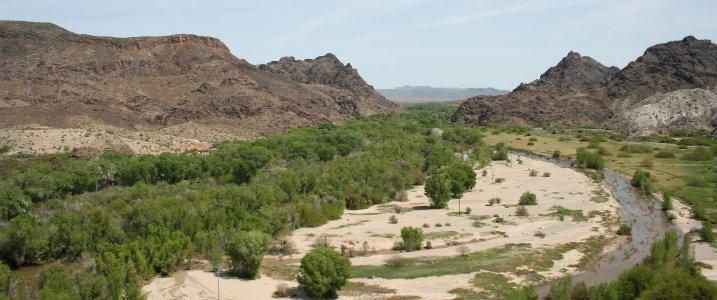Floods are Necessary for Maintaining Healthy River Ecosystems
Published on by Water Network Research, Official research team of The Water Network in Academic
Flooding rivers can wreak havoc on homes and roads but are necessary for healthy ecosystems, research at Oregon State University suggests.
The study shows that alterations to rivers’ natural flow patterns – because of dams, diversions and changes in precipitation – cause damage to riparian plant communities and river ecosystems in general.

Source: OSU
Even minor shifts in temporal flow patterns harm networks of competing vegetation, said the study’s corresponding author, Jonathan Tonkin of the OSU College of Science.
The most severe effects, he said, occur when cyclical flooding is removed from the equation.
“We think of floods as being these damaging forces because of what they can do to human infrastructure,” said Tonkin, a postdoctoral scholar in integrative biology. “But flooding has benefits across the board, for both organisms and habitats in and around rivers.”
Findings were published today in Nature Ecology and Evolution.
Researchers used models to explore how a variety of possible flow scenarios could affect the diversity and integrity of riparian forests along major rivers and looked at five tree and shrub guilds common to rivers worldwide. The guilds were groupings of species with similar responses to water availability and river flow disturbance.
The scientists used detailed species biology and 83 years of flow data from Colorado’s Yampa River, an undammed, 250-mile waterway, to build a computer model to predict future flows and to quantify the effects of flow changes on riparian plant communities.
Results showed that even modest alterations in the historical patterns of flood and drought can have negative effects on ecological networks, in this case, competing plant guilds, and that network “connectance” decreased as flow regime alteration increased; connectance is a measure of just how linked species in a network are to one another.
Study results also indicate that river flow homogenization, a result of damming, may be just as detrimental as drought to riparian communities.
“Connectance plays a fundamental role in maintaining biodiversity,” Tonkin said. “Evidence suggests that highly connected communities are better able to deal with species losses in food webs and are more resistant to invasion by non-native species. The simplification of these networks, including because of drought conditions that are predicted to increase widely over the next century, may predispose networks to collapse.”
Thus, preserving or restoring key components of natural flow regimes, which enhance connectance, should be a priority for river managers, he said.
“River-dependent communities have evolved over millennia and have been tailored by natural selection to the volume and seasonal variability of the flows,” he said. “Maintenance of flooding is fundamentally important for ecosystem health. Flooding is a vital driver of the ecology of rivers.”
One of the effects of reduced flooding is a change regarding which riparian guild plays the keystone role; keystone refers to having the single largest effect on the ecological network in terms of influences on other species.
“Removing floods, in particular, led to a loss of keystone status of hydroriparian pioneer trees, which are species like cottonwoods, alders, and river red gum,” Tonkin said. “Loss of keystone guilds leads to changes in fundamentally important ecosystem services.”
Those include habitat provision for wildlife, flood mitigation and bank stability, microclimatic regulation, and nutrient cycling.
“Because different guilds have different soil requirements and ecological roles, it is important to predict which ones will function in a keystone role under future flow regime scenarios,” he said.
Supporting this study were the U.S. Department of Defense, the U.S. Forest Service and Dinosaur National Monument.
Collaborators included David Lytle of the OSU College of Science as well as researchers from the University of Washington and the Forest Service.
Source: Oregon State University
Media
Taxonomy
- Resource Management
- Water Resource Management
- River Studies
- Integrated Water Management
- River Engineering
- River Restoration
- Flood management
- Flood damage
- River Engineering
- Flood Risk Management
- Flood Mapping